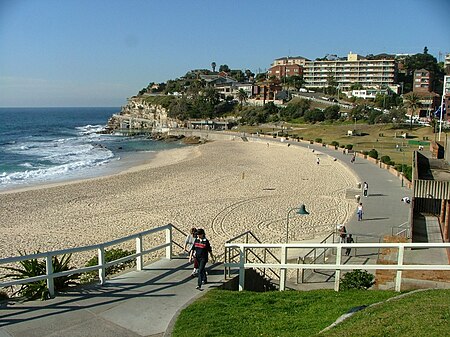Bronte House is a heritage-listed historic house and visitor attraction located at 470 Bronte Road, Bronte, Waverley Municipality, New South Wales, Australia. Built in the Australian Gothic Revival style, the house was designed by Georgiana & Robert Lowe and Mortimer Lewis and built from 1843 to 1845. It is also known as Bronte estate. The property is owned by Waverley Municipal Council and was added to the New South Wales State Heritage Register on 2 April 1999 and is listed on the (now defunct) Register of the National Estate.Described as a "magnificent, mid-Victorian mansion", the house is a sandstone, one-storey bungalow with verandahs on the west and east sides; and features a service wing that extends to the south, plus two octagonal rooms with cone-shaped roofs.
Bronte House was designed by the Colonial Architect, Mortimer Lewis, who set it on the edge of what is now known as Bronte Gully. He obtained the first land grant of 4.9 hectares (12 acres) which was right to the shoreline of Bronte Beach, at the time known as Nelson Bay. Lewis decided to consolidate his holdings including the whole area which formed Bronte Park and sited the house on the estate. Construction began c. 1838, but Lewis sold the house in 1843, under financial duress, for A£420 when it was still incomplete, to Robert Lowe. Lowe completed the construction of the house in 1845. Lowe's wife, Georgina, was a skilled watercolour artists, botanist and gardener. Her sketches and watercolours provide the earliest images of Bronte House and the surrounding area. She also sketched images of the New South Wales countryside. Her sketchbook is held at the State Library of New South Wales. Georgina Lowe took an interest in the estate and established the first Bronte House gardens which have become well celebrated. The Lowes lived in the residence for four years. Robert Lowe, an Oxford graduate and member of the English Bar, was appointed to the Legislative Council of New South Wales and was admitted to the New South Wales Bar. In 1849 the Lowe family sold Bronte House and returned to England, where Lowe was elected to the House of Commons and later appointed Chancellor of the Exchequer. In 1880 he became Viscount Sherbrooke.The garden was neglected over the years, until well-known Sydney restaurant critic, Leo Schofield, became the tenant. Schofield has been credited with restoring the garden. The house is now owned by Waverley Municipal Council and is leased to private tenants, who are expected to maintain the house and gardens and open it to the public a few times a year. Since 2001 the garden layout has been directed by Myles Baldwin, a landscape designer.











